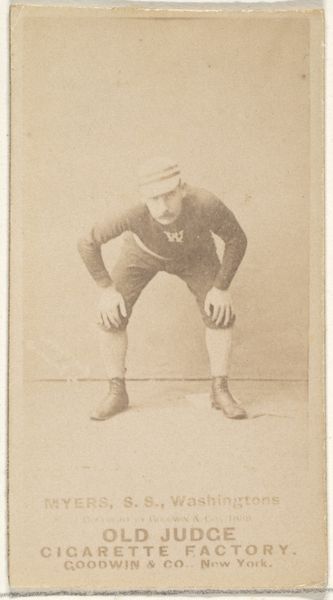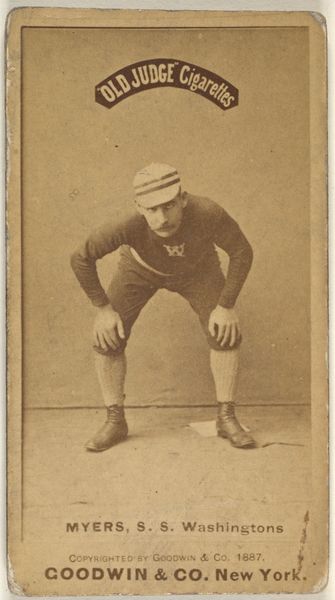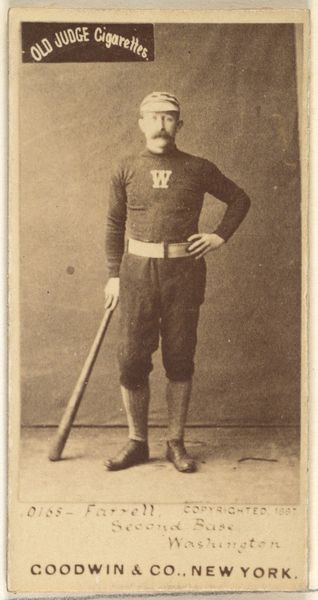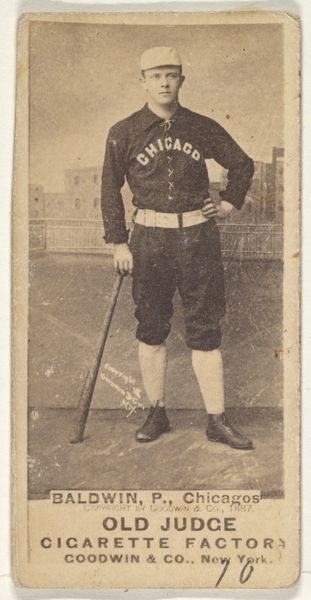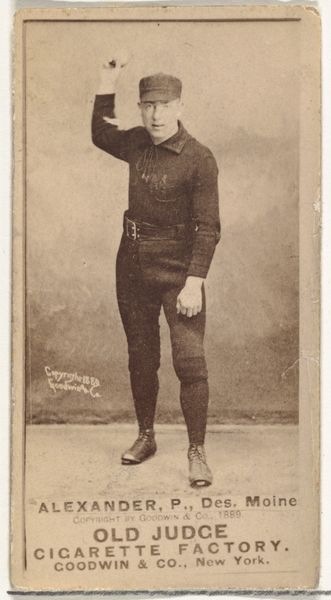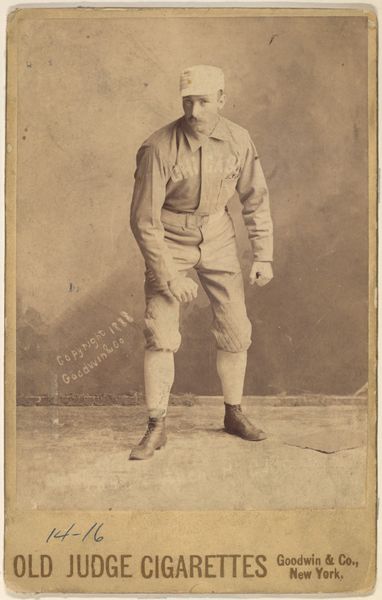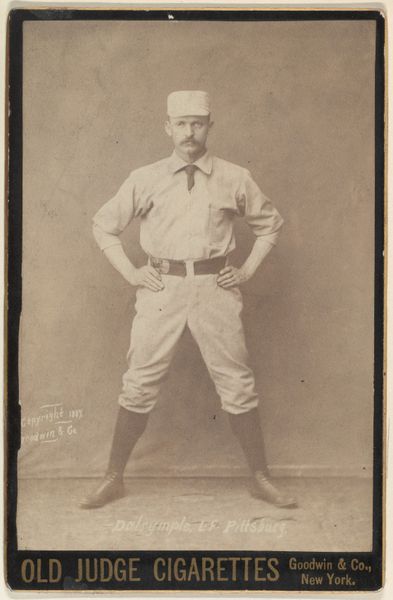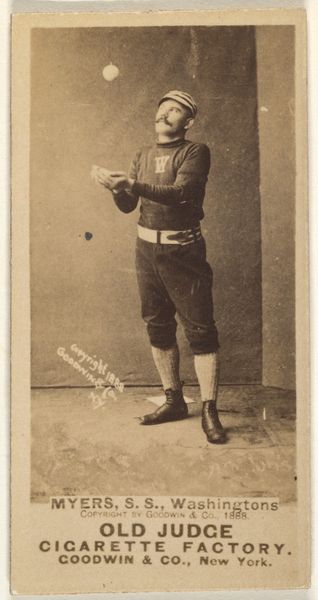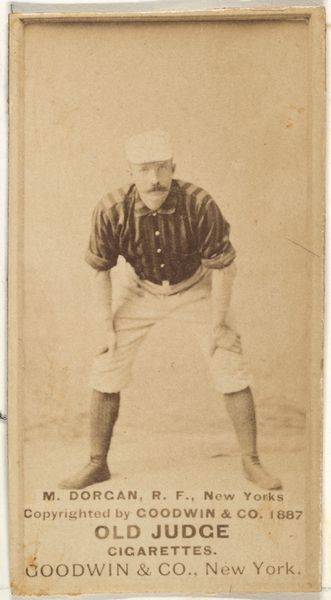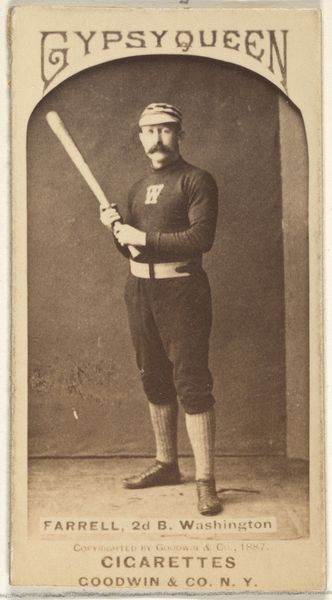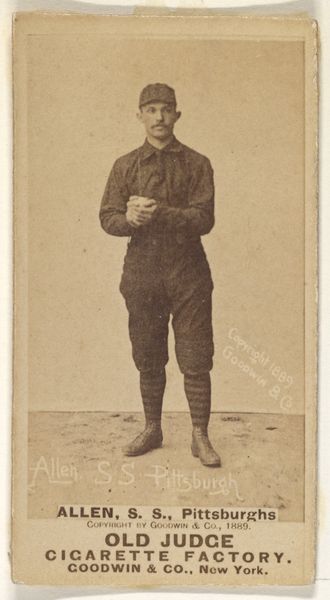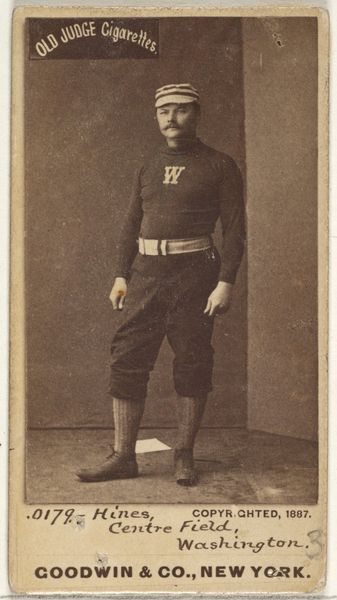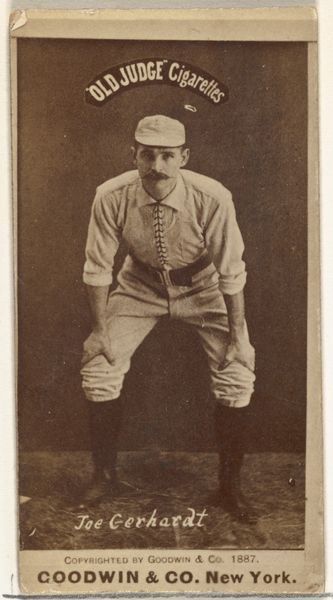
John A. "Jack" Farrell, 2nd Base, Washington Nationals, from the Old Judge series (N172) for Old Judge Cigarettes 1887
0:00
0:00
print, photography, albumen-print
#
portrait
# print
#
impressionism
#
baseball
#
photography
#
historical photography
#
19th century
#
men
#
albumen-print
Dimensions: sheet: 2 11/16 x 1 3/8 in. (6.9 x 3.5 cm)
Copyright: Public Domain
Editor: Here we have "John A. 'Jack' Farrell, 2nd Base, Washington Nationals" from the Old Judge series, made in 1887, an albumen print. It's essentially a baseball card, a portrait of a player. What’s striking is its direct connection to consumer culture through the advertisement. How do you interpret this work? Curator: Precisely! It’s not just a portrait; it’s a commodity, directly linked to the consumption of Old Judge Cigarettes. I'm drawn to the materiality of this card itself, the albumen print process, a specific technology employed to mass-produce these images. It challenges our typical understanding of “art.” This wasn’t destined for a gallery; it was designed to be distributed, traded, maybe even discarded. Think about the labor involved – from the photographer to the factory workers producing the cigarettes and the cards themselves. Editor: So, the context of production is key here? Curator: Absolutely. This piece prompts questions about value. Is it in the baseball player represented? The photographic process? Or its role in promoting a consumer product? The photographic image becomes an advertising tool, inseparable from its commercial purpose. Editor: I see your point about the blurred lines between art and commodity. Did people consider this ephemera as having value at the time? Curator: Initially, its value was probably tied directly to the cigarettes, and later perhaps to the player. Today, its value resides in its scarcity, its historical context as an early example of sports memorabilia, and the light it sheds on 19th-century commercial practices and photographic techniques. Editor: That's fascinating! I never considered how much this little card could reveal about the economy and culture of the time. Thanks for broadening my perspective. Curator: And thank you for bringing it up; it's important to examine what art can teach us about the ways we produce and consume.
Comments
No comments
Be the first to comment and join the conversation on the ultimate creative platform.
